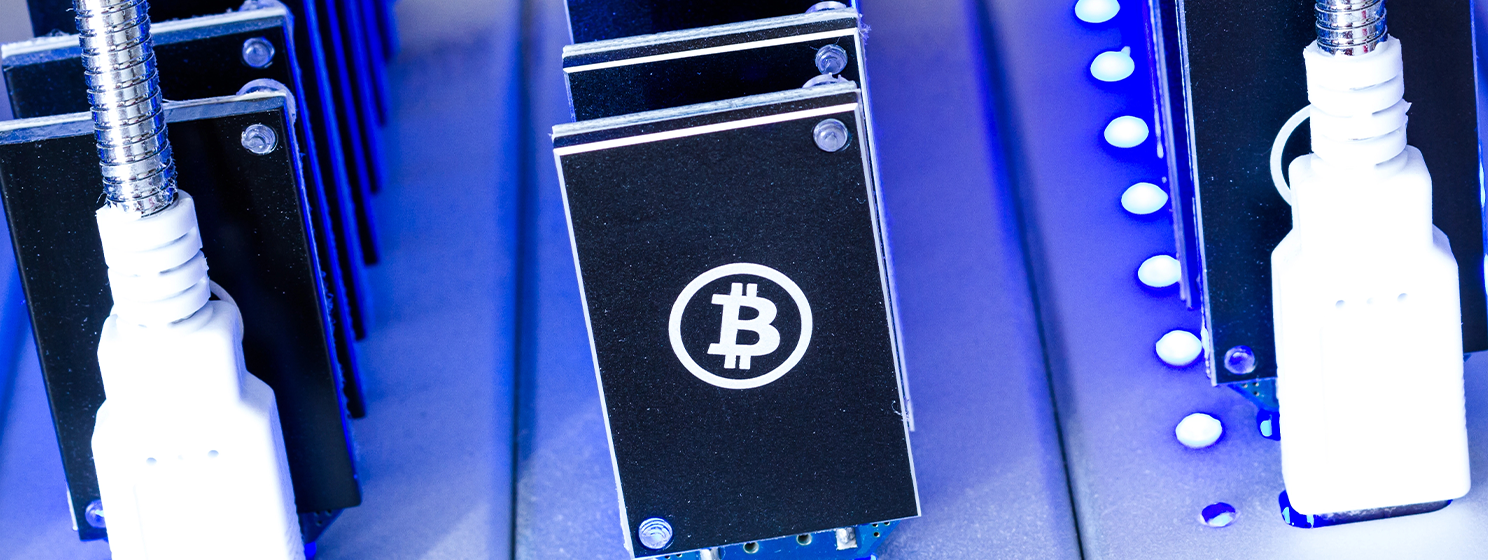|
Getting your Trinity Audio player ready...
|
A change is occurring in BTC mining, where efficiency is very important. The industry has benefited from Moore’s Law for years, which predicted transistor density would double every few years, leading to faster and cheaper chips. However, as we reach the 3-5 nanometer (nm) node in 2025, progress is slowing. The once-rapid performance gains are decreasing, causing miners and manufacturers to alter their plans.
This has resulted in a shift to new materials such as carbon nanotubes and a greater focus on energy use as the pattern of constant innovation slows. This may change how BTC is mined, balancing power with sustainability in a competitive market.
BTC mining depends on application-specific integrated circuits (ASICs), custom chips that perform complex calculations that protect the network. In the past, there was fast progress from large, energy-consuming setups to machines that produced more hashes per watt. By 2025, top ASICs, such as Bitmain‘s Antminer series or MicroBT’s Whatsminers, have efficiencies of about 15-20 joules per terahash (J/TH), which is much better than the 100+ J/TH of older models. Still, the rate of improvement is falling. The efficiency boosts from generation to generation, which used to be 50-100%, are now only 20-30% as we get closer to the limits of silicon-based transistors.
The reason for the slowdown is that at 3-5nm, quantum effects, such as electron tunneling, cause problems. This leads to leakage and heat issues that reduce performance gains. Also, making these tiny features is very expensive, costing billions in research and development for foundries like Taiwan Semiconductor Manufacturing (NASDAQ: TSM) or Samsung.
For BTC miners, this means lower returns. The latest 3nm chips from companies like Block (formerly Square) only offer small improvements over 5nm chips, and the energy savings don’t make up for rising electricity costs. In fact, the increase in global hashrate has been slower in 2025 because smaller companies can’t justify upgrading hardware due to reduced profitability. Models like the Antminer S19 are nearly unprofitable, especially with power prices above $0.05 per kWh.
This stagnation is both technical and economic. The BTC halving in April 2024 cut block rewards in half, increasing competition and pushing miners to merge. Public companies like MARA (NASDAQ: MARA) and Bitdeer (NASDAQ: BTDR) are growing their fleets to 75 EH/s or more, but they are using hardware that isn’t improving as fast as the network requires.
Experts say that the block reward mining hardware market is expected to reach $51.8 billion by 2030, but growth is now more about size and making small efficiency improvements instead of making revolutionary chip changes. Home miners, who used to be helped by accessible ASICs, are also struggling. Some call for chip independence to make access more equal through modular designs.
The industry needs to move beyond silicon’s limitations. Carbon nanotubes (CNTs) are becoming popular because they offer smaller, faster, and more energy-efficient transistors. These cylindrical structures, made of rolled-up graphene sheets, conduct electricity with very little resistance and can work at sizes below 1nm without the quantum problems that affect silicon. Chinese researchers have already created CNT-based AI chips that are 1,700 times more efficient than silicon chips for certain tasks. If used in BTC mining, CNTs could greatly lower power use. This would allow for denser, cooler ASICs, possibly reducing efficiencies to below 5 J/TH by late 2025.CNTs aren’t the only option. Other materials, like gallium nitride or 2D substances like molybdenum disulfide, are being studied because they have better electron mobility. Also, there is a growing focus on energy-related changes, such as immersion cooling, AI-improved rig management, and hybrid setups that reuse mining heat for homes or data centers. Companies like Canaan (NASDAQ: CAN) are investing in these integrations, believing that the next big efficiency gains will come from complete system designs, not just smaller nodes.
Recycling CNTs is also showing potential, with discoveries that allow full reuse of nanotube fibers, which addresses environmental worries in an industry that is often criticized for e-waste.
These new ideas could keep Moore’s Law alive in some way. For BTC miners, this means a more sustainable future with lower costs, smaller carbon footprints, and protection from regulations on energy use. There are still challenges, such as scaling CNT production. Purity and alignment problems are still stopping widespread use. Geopolitical issues, such as the competition between the U.S. and China in the chip market, could also slow global implementation.
The current slowdown marks a critical juncture for BTC mining hardware. The industry must move beyond its reliance on shrinking silicon by investigating novel materials and more intelligent energy solutions. By 2025, success in this shifting landscape will go to those who adapt, from big firms aiming for exahash to hobbyists building advanced systems.
Watch | Mining Disrupt 2025 Highlights: Profitable trends every miner should know

 12-10-2025
12-10-2025 





